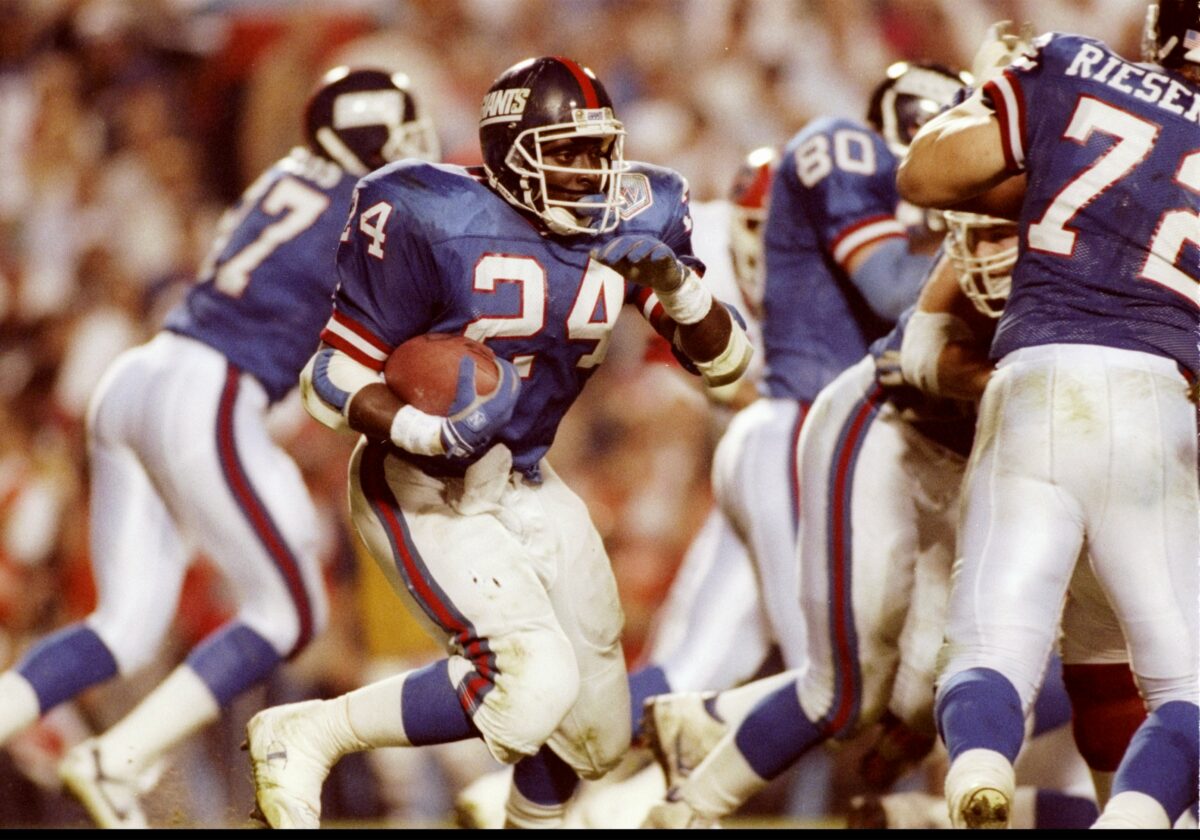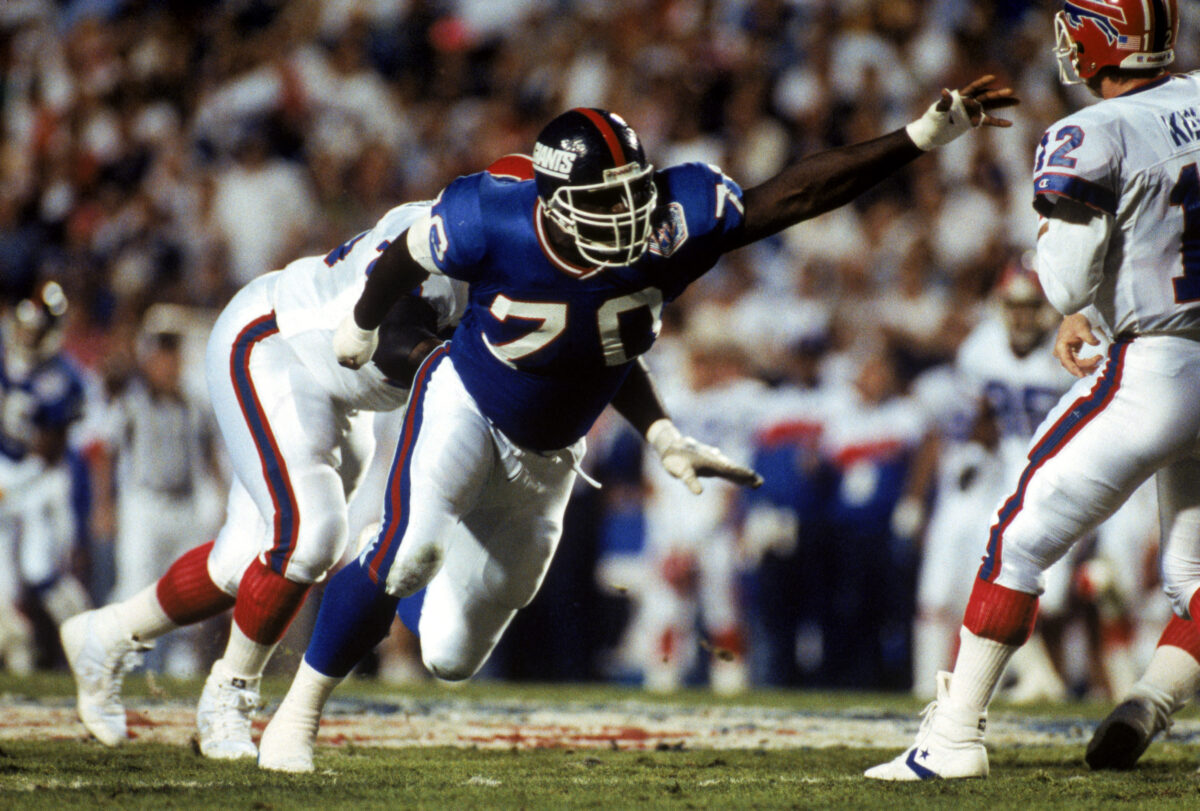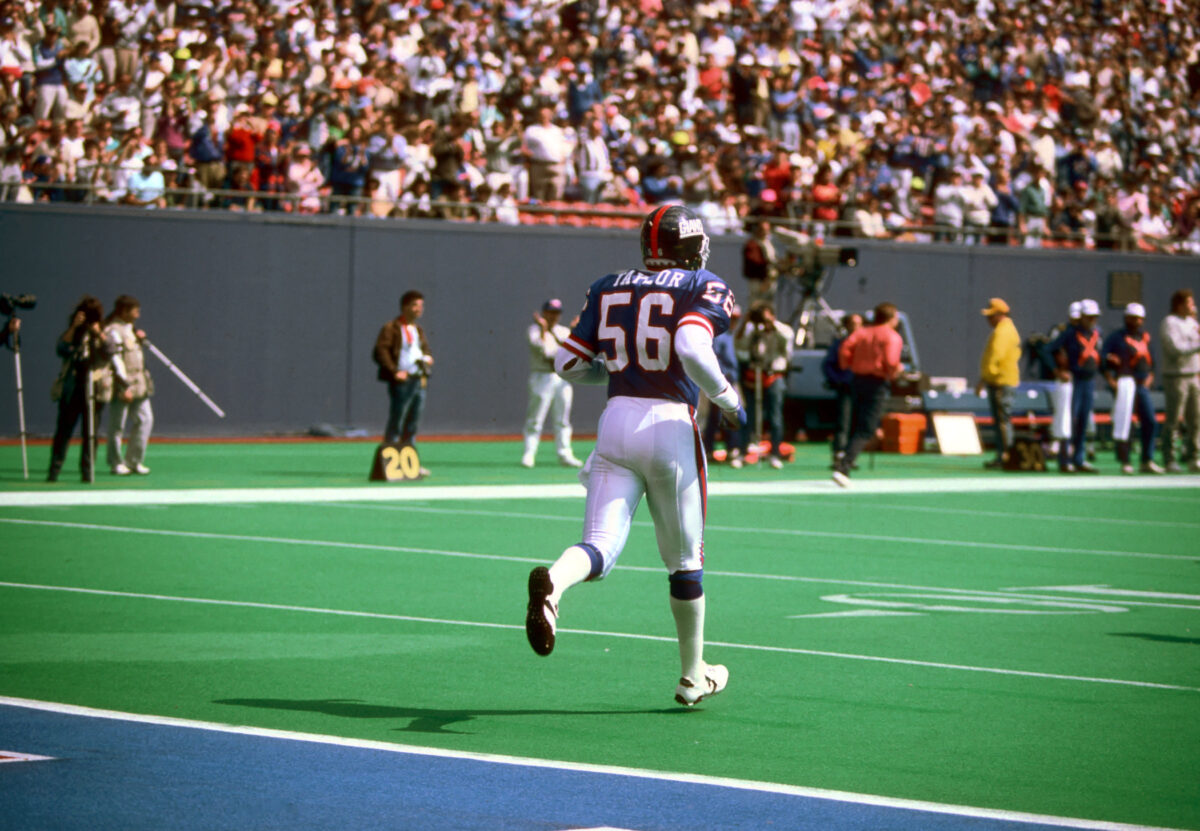In the latest Giants Wire Flashback Friday, we travel back to 1986 when the New York Giants acquired RB Ottis Anderson from the Cardinals.
In 1986, the New York Giants began the season with a 4-1 record. Their defense — after surrendering 31 points to Dallas in the season opener — was pounding people again. Over next four games, they held opponents to just 9.75 points per game.
The offense, however, was stuck in the mud. They were averaging just 19 points per game, and for a Super Bowl contender, that wasn’t going to cut it.
On Oct. 9, the Giants were facing a tough game against the Philadelphia Eagles, and general manager George Young wanted to bolster the running game. The Giants had Joe Morris, but he was only backed up by Lee Rouson, Tony Galbreath and fullback Maurice Carthon.
Young decided to send second- and seventh-round picks in the 1987 NFL draft to the St. Louis Cardinals in exchange for running back Ottis “O.J.” Anderson, who had been the 1979 Offensive Rookie of the Year and had five 1,000-yard seasons under his belt.
Here is how Frank Litsky of The New York Times reported the move:
The 29-year-old Anderson is the 11th-leading rusher in National Football League history with 7,999 yards in eight seasons, only 82 yards behind the retired Larry Csonka. In 12 games against the Giants, he ran for 1,123 yards, more than any other active player.
Anderson is expected to join the Giants Thursday and will be available for Sunday’s game here against the Philadelphia Eagles.
Anderson was available for that Philly game and many more afterward. The Giants trounced the Eagles, 35-3, finished the season 14-2 and won Super Bowl XXI.
Anderson rushed just 24 times over eight games for the Giants that year, gaining only 81 yards and a touchdown. In the playoffs, he rushed seven times for six yards and scored a touchdown near the end of Super Bowl XXI, after the game was well in hand.
That was thought to be the final act for Anderson, who was considered pretty much done in NFL circles. But they didn’t know O.J. Anderson.
After sticking around as a backup the next two seasons, Anderson became the Giants’ bell-cow back at age 32 in 1989. He rushed 325 times for 1,025 yards and 14 touchdowns. In addition, Anderson caught 28 passes for 268 yards and was named NFL Comeback Player of the Year.
The next season, he was joined by rookie Rodney Hampton in the backfield but still rushed for 784 yards and 11 touchdowns. When Hampton broke his leg late in the season, head coach Bill Parcells turned to Anderson to lead the way on the ground.
Ottis was the linchpin in the Giants’ ball-control offense, rushing 21 times for 80 yards in the divisional victory over the Chicago Bears. He rushed for 67 yards on 10 carries against San Francisco in the NFC championship game.
But his greatest achievement as a Giant was yet to come. In Super Bowl XXV against the high-flying Buffalo Bills, the Giants’ only path to victory was for them to keep Jim Kelly and Co. on the sideline as much as possible.
They did just that. Anderson rushed 21 times for 102 yards and a touchdown and was named the game’s MVP.
Before the Super Bowl, Ottis showed his humility. At that time, he was eighth on the NFL’s all-time rushing list, sandwiched between O.J. Simpson and Earl Campbell.
“I always wanted to be the featured back on a team that plays in the Super Bowl,” Anderson told reporters during Super Bowl week. “I was with New York the last time they were here, but it was different then. I was sitting at an (interview) table and only two or three of you came over to talk to me. In ’87, I sat and watched Phil Simms, Lawrence Taylor and Mark Bavaro, with the crowds gathered around them, and I wondered what it must be like to get all that attention.
“Now,” he said, gesturing to the ring of reporters around him, “it’s great to be one of the main ingredients on a Super Bowl team. I never thought that this would happen to me, and I appreciate all of you guys — and ladies, too — coming to talk to me. I really do.”
Anderson, considered washed up in 1986, didn’t retire until after the 1992 season. He was 36 years old. In his seven seasons with the Giants, he rushed for 2,274 yards and scored 35 touchdowns. He also caught 77 passes for 567 yards.
Anderson is not in the Giants’ Ring of Honor, but in the hearts of Giant fans he certainly belongs there. Parcells believed Anderson was Hall of Fame timber even before Anderson won the MVP of the Super Bowl.
“He should go to Canton,” said Parcells. “He’s got too many pelts on the wall. We wouldn’t be here without him.”
Truer words have never been spoken.
[lawrence-related id=661205,661254,661141,661162]








